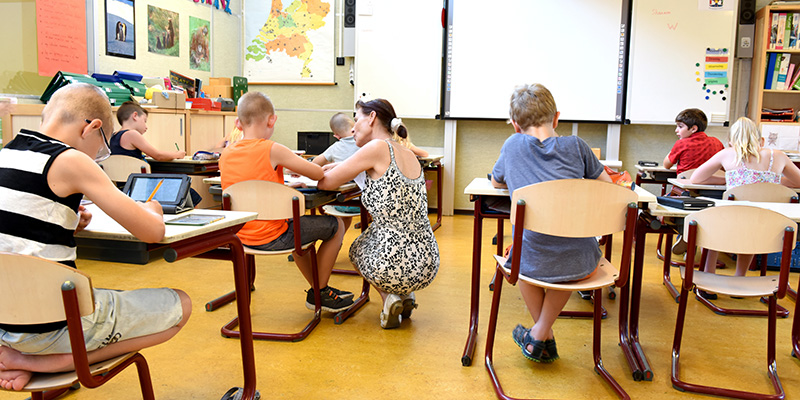Study identifies best ways of helping teachers adopt supports for students with autism

LAWRENCE — Most teachers will work with students with autism in their careers, often not in a separate special education setting. Evidence-based practices exist to help those educators assist students with accessing content and developing skills. A new study from the University of Kansas and University of Washington sheds light on the best ways to train teachers so they understand the practices and can implement them in their classrooms.

Research has shown more than a dozen practices to be effective at helping students with autism in general education settings. However, little is known how best to implement them in schools. Maria Hugh, assistant professor of special education at KU, led a study that surveyed and interviewed more than 85 teachers on the most effective methods of professional development and training to ensure the practices are used properly, effectively and with support for the educators.
Survey respondents indicated active learning, collective participation, content focus, cohesion and sustained duration were the most effective methods of delivering training. Professional development can be delivered in multiple ways, though, and webinars and conferences were shown to be the least likely to help educators use the practices to aid their students with autism.
“We wanted to learn directly from educators about what works for them,” Hugh said. “These were general education, special education and paraeducators telling us about what practices they use with learners with autism in general education settings and what helps them or what hinders them.”
Previous research has shown that including students with disabilities in general education settings has positive educational outcomes for all learners, yet it is not always evident how best to include practices to aid students with disabilities in such settings.
“We’ve learned a lot in the last 10 years about what practices work well with kids with autism. But they’re not always studied with representative populations,” Hugh said. “And there are at least 20, which is a lot for teachers to keep up with.”
Therefore, understanding the most effective ways of delivering training on the practices can help ensure teachers understand the practices and how to use them, as well as ensuring school budget allotments for professional development are used effectively.
The study, published in the journal Teacher Education and Special Education, was written with Michael Pullman, Mahima Joshi, Daina Tagavi and project primary investigator Jill Locke of the University of Washington; Kaitlyn Ahlers of the Geisel School of Medicine and Alyssa Hernandez of the University of Pennsylvania.
The opportunity to work with colleagues to understand practices and having support locally showed to be the most important factors in adoption of evidence-based practices. Active learning showed to be another effective approach. Teachers who had the opportunity to practice the methods and apply them in work situations predicted successful implementation.
Support also proved critical. When teachers had ongoing opportunities to learn more about a practice, and it was coherent with school or district policy, new practices were more successfully implemented. Coaching and support was also key, as teachers who had coaches or mentors who could help them understand and answer questions about new evidence-based practices consistently rated highly as well. Some respondents indicated coaching availability was key, as they only had access to coaching after they had encountered serious challenges with a new practice. On-site experts and support in the classroom also rated highly.
Coaching, pre-service training and workshops offered by the district or school proved critical in successfully implementing new practices for learners with autism. Study results also showed that only receiving training on a method once was not as effective. When maximizing use of school’s limited resources, these approaches with ongoing support and active training within the school can be effective, as opposed to sending one or two teachers to an educational conference to learn about new practices, Hugh said.
“It’s great to help kids reach their full potential,” Hugh said. “This is one way we can do that. Research has shown one of the best ways to get someone to use a new practice is to show them that it works. We need to help educators have usable evidence-based practices in schools and help support their use of those to improve children’s outcomes.”
image credit: Pexels